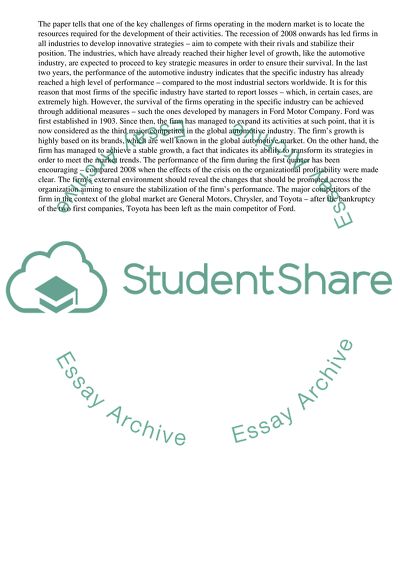Cite this document
(“Strategic Management of Ford Motor Company Essay”, n.d.)
Strategic Management of Ford Motor Company Essay. Retrieved from https://studentshare.org/management/1573347-strategic-management-report-analysis-of-ford-case-study
Strategic Management of Ford Motor Company Essay. Retrieved from https://studentshare.org/management/1573347-strategic-management-report-analysis-of-ford-case-study
(Strategic Management of Ford Motor Company Essay)
Strategic Management of Ford Motor Company Essay. https://studentshare.org/management/1573347-strategic-management-report-analysis-of-ford-case-study.
Strategic Management of Ford Motor Company Essay. https://studentshare.org/management/1573347-strategic-management-report-analysis-of-ford-case-study.
“Strategic Management of Ford Motor Company Essay”, n.d. https://studentshare.org/management/1573347-strategic-management-report-analysis-of-ford-case-study.


